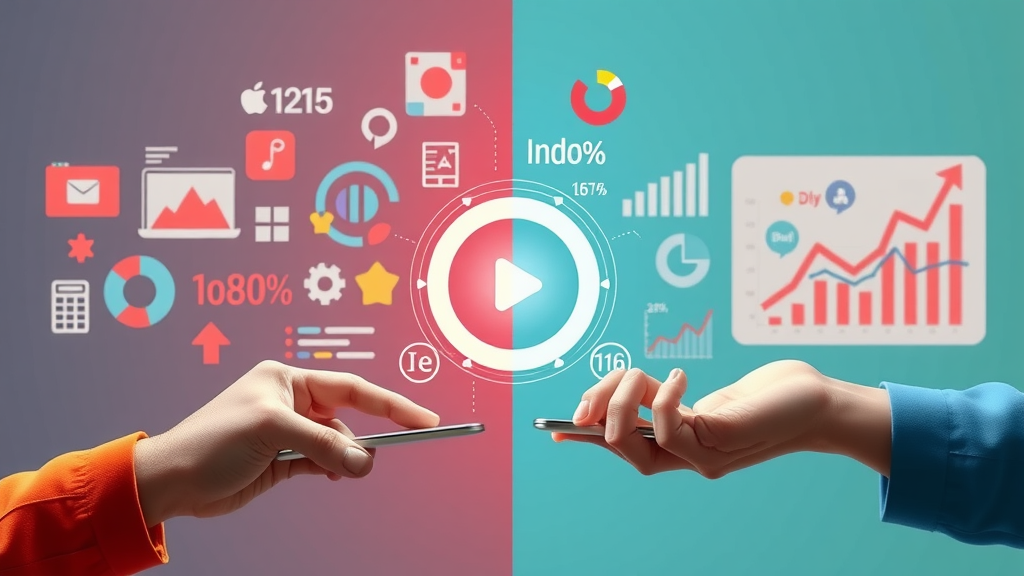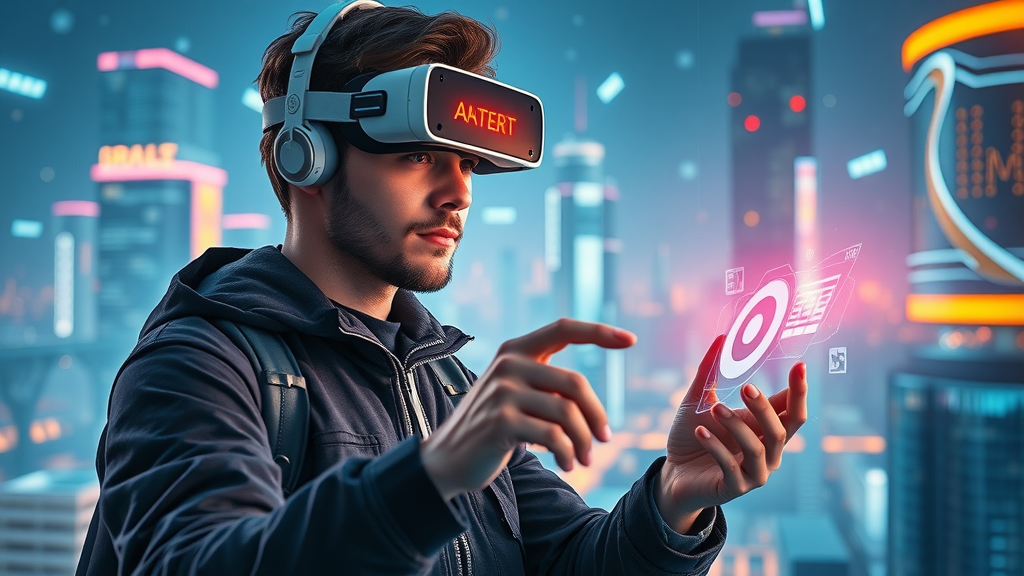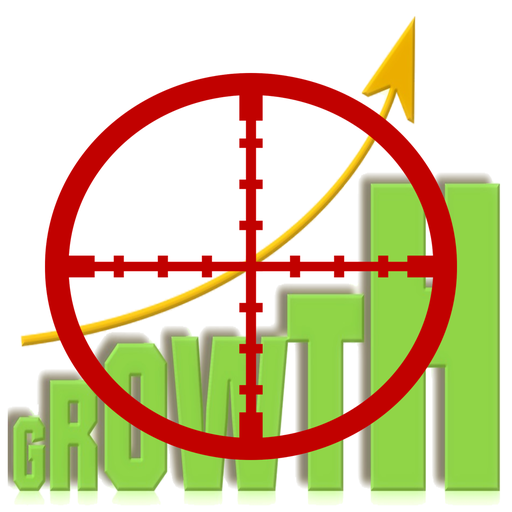Did you know that over 60% of global advertising spend now flows through digital marketing channels? This remarkable shift underlines the urgency for every business—regardless of size or industry—to master and strategically leverage digital marketing channels. In this guide, you'll discover practical strategies, real-world examples, and actionable tactics to accelerate your digital marketing success, outmaneuver your competition, and create a channel mix that truly crushes your goals.
Unlocking the Power of Digital Marketing Channels in the Modern Landscape
Today’s consumers are connected like never before, and businesses that excel in digital marketing channels are reaping substantial rewards. Digital marketing channels enable brands to reach a wider target audience , track real-time engagement, and personalize communication across every stage of the customer journey. For example, a successful fashion retailer might use a combination of social media marketing to showcase new arrivals, email marketing for personalized promotions, and content marketing through blog posts to build authority and drive organic traffic. This multi-channel approach ensures messages resonate where and when they matter most, amplifying brand awareness and boosting ROI.
Embracing the full spectrum of digital marketing channels —from influencer marketing and SEO to video marketing —empowers organizations to adapt their marketing strategy in a world where audiences demand immediacy, authenticity, and value. Let’s dive into how you can unlock these channels and elevate your next marketing campaign.

-
Did you know that over 60% of global advertising spend now flows through digital marketing channels? This remarkable shift highlights how essential it is to master digital marketing strategies to outperform your competition and achieve outstanding results.
Why Mastering Digital Marketing Channels is Crucial for Every Business
Every business, whether local startup or global enterprise, can significantly benefit from harnessing the power of digital marketing channels . Mastery of these channels means more than just launching ads or updating your social media profile—it’s about designing a cohesive digital marketing strategy that supports your business objectives across all customer touchpoints. Effective use of email marketing , influencer marketing , and content marketing can skyrocket your brand awareness , nurture leads, and boost conversions by meeting your target audience where they’re most active.
For instance, a technology company might blend SEO to attract organic website traffic, utilize affiliate marketing to partner with trusted brands, and employ automated email marketing campaigns for personalized engagement. The ability to integrate and coordinate these efforts within a unified digital marketing channel mix not only drives superior ROI but also fosters a robust, loyal customer base.

-
Explore how effective use of digital marketing channels like social media, email marketing, and influencer marketing can skyrocket brand awareness and ROI. Learn the importance of creating a cohesive digital marketing strategy across all platforms.
What This Guide Covers: Transforming Your Digital Marketing Channel Approach
-
A comprehensive breakdown of every major digital marketing channel
-
How to choose the best marketing channels for your business
-
Actionable strategies to optimize your marketing campaigns
-
Expert insights on using social media, content marketing, influencer marketing, video marketing, and more
Overview: Understanding Digital Marketing Channels and Their Role

Definition of Digital Marketing Channels
Digital marketing channels are the platforms and mediums businesses use to communicate, engage, and build relationships with their target audience online. These channels include everything from social media platforms like Facebook and Instagram, to search engines such as Google and Bing, to more direct approaches like email marketing and content marketing in the form of blog posts, videos, and downloadable resources. Each channel allows for diverse ways to connect with potential customers , distribute value-driven content, and analyze engagement, ultimately driving users down the marketing funnel towards conversion.
The power of digital marketing channels lies in their ability to provide measurable results, interactive communication, and hyper-targeted messaging. By strategically combining multiple channels—like using influencer marketing to boost brand credibility or affiliate marketing programs to extend reach—businesses can structure a digital marketing strategy that adapts to evolving consumer behaviors.
Effective mastery of digital marketing channels ensures a brand remains visible where audiences are most active and guides them through tailored paths to conversion. This makes the selection and management of each digital marketing channel a core function of modern marketing campaigns .
Digital Marketing vs. Traditional Marketing Channels
While traditional marketing channels such as print ads, direct mail, or TV commercials still play a role in some industries, the digital landscape offers significant advantages for modern marketing campaigns. With digital marketing channels , businesses can achieve higher reach at a fraction of the cost, with campaigns that can be more easily measured and optimized in real-time. For example, analytics tools allow marketers to monitor engagement on a social media platform or track open rates for an email marketing campaign, unlike the generalized reporting methods used in traditional advertising.
Another key distinction is measurability . Digital channels provide data on every interaction, enabling marketers to attribute ROI with far greater precision. This makes it possible to fine-tune campaigns and reallocate resources to the highest-performing media platforms , ensuring consistent progress toward goals. Furthermore, digital strategies like search engine optimization (SEO) and video marketing can reach audiences who are actively seeking solutions—driving intent-based leads that traditional media struggles to capture.
Ultimately, the agility and personalization offered by digital marketing channels solidify their role as an essential component of any comprehensive marketing strategy in the modern age.
|
|
|
Traditional vs. Digital Marketing Channels |
|
Aspect |
Traditional Marketing Channels |
Digital Marketing Channels |
|---|---|---|
|
Reach |
Local/National; often broad, less targeted |
Global, scalable, highly targeted |
|
ROI |
Challenging to track and optimize |
Highly trackable and easily optimized |
|
Measurability |
Generalized feedback; limited analytics |
Real-time, granular data and analytics |
|
Application |
TV, radio, print, outdoor ads, telemarketing |
Social, email, content, SEO, influencer, affiliate, video, paid media |
Top Digital Marketing Channels for Businesses Today
Social Media Marketing: Engaging Audiences Across Platforms

Social media marketing remains at the forefront of modern digital marketing channels. By creating engaging content and participating in conversations on platforms like Facebook, Instagram, Twitter, TikTok, and LinkedIn, brands can rapidly build brand awareness and foster loyalty among their target audience . Each social media platform offers unique advantages—Instagram for visual storytelling, LinkedIn for B2B networking, and TikTok for viral video challenges. An effective marketing strategy harnesses the features of each platform, from organic posts to advanced paid ad targeting.
Successful social media marketing involves a careful balance of authenticity, visual creativity, and community engagement. By monitoring trends, responding to feedback, and collaborating with influencer marketing partners, brands can quickly grow their communities and drive meaningful interactions. The best-performing campaigns align content with audience interests and leverage analytics tools for continuous improvement.
Investing in social media marketing allows brands to humanize their story, respond in real time, and create memorable experiences that lead to higher levels of engagement and conversion.
Email Marketing: The Power of Personalization
Email marketing is one of the highest-ROI digital marketing channels available. It enables brands to deliver personalized, relevant messages directly to segmented email lists , driving customer retention, repeat purchases, and nurturing of potential leads. From welcome sequences to abandoned cart reminders and exclusive campaign offers, email marketing empowers a business to stay top-of-mind with its target audience .
Advanced analytics let marketers segment lists based on purchase behavior or engagement levels, further improving message relevance. Tools for A/B testing subject lines and content help optimize results for each campaign. Personalization—using customer names, preferences, and tailored offers—significantly increases both open and click-through rates.
An effective email marketing strategy complements other digital marketing channels by driving traffic back to your website, blog, or product pages, and synchronizing promotions across channels for a cohesive customer experience.
Content Marketing: Delivering Value Through Information

Content marketing centers on creating and sharing valuable, relevant, and consistent content to attract and engage a clearly defined target audience . Blog posts, informative articles, how-to guides, eBooks, infographics, and videos form the backbone of a robust content strategy. By addressing real customer questions and providing solutions, brands position themselves as industry thought leaders and trusted resources.
Effective content marketing leverages SEO best practices to increase visibility in search engines , improving both quantity and quality of website traffic. Educational content also fuels your other digital channels: for example, a blog post can be repurposed for social media , included in an email marketing campaign, or referenced in video scripts.
The most successful brands use content marketing not just for awareness, but also for nurturing leads throughout the customer journey, answering questions, overcoming objections, and ultimately converting readers into loyal customers.
Search Engine Optimization (SEO): Maximizing Visibility on Search Engines
Search engine optimization (SEO) remains a cornerstone of modern digital marketing. By optimizing websites and content to rank highly on search engines like Google and Bing, brands position themselves in front of potential customers actively seeking solutions. Core elements of SEO include keyword research, quality content creation, optimizing meta tags, improving site speed, and building authoritative backlinks.
When effectively executed, a robust SEO strategy continually drives organic traffic, reduces customer acquisition costs, and outperforms solely paid methods. SEO goes hand-in-hand with content marketing by ensuring your blog posts and landing pages answer user queries and align with search intent.
In an environment where over 90% of online experiences begin with a search engine, prioritizing SEO as a digital marketing channel is critical for long-term growth and brand discovery.
Influencer Marketing: Leveraging Trust for Brand Growth

Influencer marketing unlocks the power of third-party endorsement by leveraging popular digital personalities to introduce brands to loyal, engaged audiences. This marketing channel works particularly well for building authenticity, trust, and rapid awareness. Carefully selected influencers can tell your brand’s story through creative content on social media platforms , YouTube, and blogs, dramatically expanding reach beyond your own following.
To succeed, brands must align with influencers whose values and audience closely match the target audience . Collaboration can range from sponsored posts and product unboxings to long-term brand ambassadorships. Authenticity is vital; followers trust influencers who provide honest reviews and genuine content.
Influencer marketing can be a catalyst for viral growth, especially when combined with social media marketing and targeted advertising for maximum exposure and engagement.
Affiliate Marketing: Expanding Reach Through Partnerships
Affiliate marketing enlists partners—bloggers, media outlets, and influencers—to promote your products or services in exchange for a commission on each sale or lead generated. By tapping into established networks and trusted sources, brands significantly extend their marketing reach at a lower cost and reduced risk.
This performance-based approach benefits both brands and affiliates: brands only pay for concrete results, while affiliates can generate passive income by recommending products they genuinely endorse. Affiliate marketing is especially powerful in competitive niches, where credibility and word-of-mouth play a decisive role in purchase decisions.
Integrating affiliate marketing with other digital marketing channels —such as providing affiliates with exclusive content or special offers—can further boost campaign effectiveness and drive higher conversion rates.
Video Marketing: Captivating Audiences in a Visual World

Video marketing is dominating the digital landscape, as audiences increasingly prefer dynamic, visual content. From explainer videos and customer testimonials to product demonstrations and live streams, brands are using video to capture attention, explain complex topics, and spark emotional connections.
Platforms like YouTube, Instagram Reels, and TikTok allow brands to share engaging, bite-sized content that can go viral rapidly. Meanwhile, long-form video delivers in-depth education or entertainment, fostering deeper brand loyalty. Analytics tools provide detailed data on viewer engagement, enabling marketers to refine content and messaging for each target audience .
Investing in video marketing not only enhances overall brand presence but also supports other digital marketing channels —e.g., embedding videos in email campaigns or repurposing them for content marketing efforts.
Paid Media Channels: Leveraging PPC, Display, and Retargeting
Paid media channels encompass pay-per-click (PPC) advertising, display advertising, and retargeting campaigns across platforms like Google Ads, Facebook Ads, and native ad networks. These digital marketing channels allow businesses to precisely target potential customers based on demographics, interests, browsing behavior, and intent—guaranteeing fast, visible results.
The immediate impact of paid campaigns can drive sales, promote time-sensitive offers, and support organic efforts by securing top-of-funnel traffic. Retargeting, in particular, re-engages users who have previously interacted with your brand but haven’t yet converted, reminding them of your value proposition at crucial decision moments.
To maximize ROI, it’s essential to continually test creatives, optimize bidding strategies, and combine paid with organic channels for holistic brand coverage throughout the customer journey.
|
|
|
|
Major Digital Marketing Channels: Pros, Cons, and Best Use Cases |
|
Channel |
Pros |
Cons |
Best Use Case |
|---|---|---|---|
|
Social Media Marketing |
Viral potential, community engagement, real-time feedback |
Algorithm changes, high competition, requires constant activity |
Brand awareness, product launches, audience engagement |
|
Email Marketing |
High ROI, personalization, automation capabilities |
List maintenance, deliverability issues |
Loyalty programs, lead nurturing, exclusive offers |
|
Content Marketing |
Long-term SEO value, authority building, audience trust |
Time-intensive, delayed results |
Lead generation, brand education, organic SEO |
|
Search Engine Optimization |
Evergreen traffic, intent-driven leads, cost-effective |
Algorithm updates, ongoing maintenance |
Website visibility, authority, inbound lead gen |
|
Influencer Marketing |
Authenticity, reach new audiences quickly |
ROI tracking, risk of misalignment |
Brand launches, youth markets, viral campaigns |
|
Affiliate Marketing |
Pay for performance, expand reach, trust-building |
Quality control, commission costs |
E-commerce, SaaS, product launches |
|
Video Marketing |
High engagement, memorable storytelling, SEO benefits |
Production costs, bandwidth demands |
Product demos, FAQs, customer testimonials |
|
Paid Media (PPC/Display) |
Scalable, measurable, immediate results |
Costs can escalate quickly, ad fatigue |
Promotions, brand awareness, retargeting |
Expert Strategies to Optimize Your Digital Marketing Channel Mix
-
Reviewing Your Target Audience and Customer Journey
-
Best Practices for Integrating Multiple Marketing Channels
-
Balancing Paid and Organic Digital Marketing
-
Tips for Measuring and Adjusting Campaigns in Real Time
To unlock the full potential of digital marketing channels , brands must first gain a deep understanding of their target audience —including needs, behaviors, and preferred platforms. Mapping the customer journey reveals critical opportunities to engage users at each stage. Integration is key; tying together content marketing , email marketing , social media , and paid campaigns creates a seamless, memorable experience.
Balance is essential. Combining organic tactics like SEO and engaging content with paid media ensures maximum reach and sustained growth. Teams should consistently test new channel combinations, monitor analytics, and adapt in real time based on performance data. This iterative, data-driven mindset is what separates good campaigns from truly great ones.
Selecting the Right Marketing Channels for Your Business Goals
Assessing Your Business Needs and Target Audience
Every business is unique, and selecting the optimal digital marketing channels starts with a clear understanding of your goals, available resources, and the preferences of your target audience . Conduct market research to determine where your potential customers spend their time online, what content formats resonate most, and what motivates their engagement or purchase decisions.
For startups, focusing on a handful of high-impact channels—such as content marketing , social media marketing , or SEO —can deliver substantial ROI without stretching budgets. Larger enterprises may benefit from a complex mix, including influencer marketing , affiliate marketing , and advanced automation across multiple platforms.
Remember, the right channel mix evolves as your brand grows and the digital landscape changes. Regularly revisit your audience data and adapt your strategy accordingly.
Aligning Marketing Channel Selection with Overall Marketing Strategy

Your digital marketing strategy should anchor all channel selections and campaign investments. Tie each channel’s strengths to your business priorities: need rapid awareness? Leverage social media marketing . Seeking expert authority? Prioritize content marketing and search engine optimization . Looking for quick conversions? Opt for paid media channels and affiliate marketing .
A balanced approach maximizes coverage across the marketing funnel. Aligning every channel with measurable objectives ensures consistency, reduces wasted spend, and increases the likelihood of achieving business goals.
Collaborate cross-functionally—include sales, customer support, and product teams—to gather additional insights that enhance your selection and integration of digital marketing channels .
Case Studies: How Leading Brands Use Multiple Digital Marketing Channels
Consider the world’s top athletic brands, which launch new products with coordinated video marketing teasers, exclusive influencer marketing campaigns, targeted email marketing blasts, and high-impact social ads. Tech giants combine content-rich blog posts for SEO, interactive webinars on social platforms, and precision PPC campaigns to drive registrations. These examples highlight the power of a channel mix where each medium amplifies the other, resulting in massive brand awareness and sustained customer engagement.
Even small businesses can emulate these models on a smaller scale—using blog posts to answer FAQs, nurturing an email list , and running micro-influencer campaigns to spark local buzz.
“A balanced digital marketing channel strategy is the engine of modern brand growth. By combining the right channels with clear goals, businesses can outpace the competition and achieve remarkable results.” – Marketing Director, Leading E-commerce Brand
Overcoming Common Challenges in Digital Marketing Channel Management

-
Managing Budget and Resources Across Multiple Marketing Channels
-
Staying Consistent in Messaging Across All Digital Platforms
-
Addressing Attribution and ROI Measurement
The complexity of managing multiple digital marketing channels can pose unique challenges. Allocating budget and resources efficiently requires a deep understanding of each channel’s potential impact and cost structure. Implementing unified customer data platforms streamlines reporting and analysis, preventing resource drain across teams.
Maintaining consistent messaging and visual identity across all platforms is essential for building trust and avoiding customer confusion. Create clear brand guidelines, automate content where possible, and regularly audit each marketing campaign for alignment.
Attribution—identifying which channel drove which result—remains a tough but crucial task. Use advanced analytics tools to track journeys across touchpoints and implement robust UTM tagging to improve ROI measurement. Regularly adjust strategies based on the data, not assumptions.
The Future of Digital Marketing Channels: Trends to Watch
Emergence of New Media Platforms and Technologies

The pace of change in digital marketing is accelerating, with new media platforms and technologies continuously emerging. Augmented reality (AR), virtual reality (VR), and voice search are transforming how brands engage users, offering immersive experiences and interactive brand stories.
Early-adopter brands leveraging platforms like Clubhouse, Meta’s Horizon Worlds, or even experimenting with crypto-driven loyalty programs, are building communities and standing out in crowded markets. Stay agile—regularly scan the horizon for new channels that align with your target audience ’s behaviors and expectations.
Integration of AI and Automation in Digital Marketing Campaigns
Artificial Intelligence (AI) and automation are redefining how brands plan, execute, and optimize digital marketing initiatives. AI-powered tools personalize user experiences, automate routine tasks like content scheduling and audience segmentation, and analyze massive campaign data for actionable insights in real time.
Automation empowers marketers to scale their efforts across multiple digital marketing channels without sacrificing quality, ensuring each touchpoint is timely and relevant. As technology advances, the brands that embrace AI and marketing automation will lead in customer satisfaction and operational efficiency.
The Rise of Short-Form Video on Social Media Platforms
Short-form video content, popularized by TikTok, Instagram Reels, and YouTube Shorts, is rapidly dominating the attention of today’s consumers. These bite-sized, highly engaging videos offer tremendous brand visibility and viral potential—making them essential for any forward-thinking digital marketing channel strategy.
The interactive, snackable nature of short-form video enables brands to quickly convey messages, showcase products or services, and participate in real-time trends. Smart marketers are blending these formats into their larger social media marketing , driving exceptional results with creative storytelling and audience participation.
Visual Guide: Digital Marketing Channels in Action
Imagine your ideal marketing ecosystem— social media buzz, SEO ranking content, email marketing nurturing leads, and video marketing campaigns all working together. Visualizing your campaigns using mind maps or customer journey flows helps identify potential channel synergies and highlights where your brand can capture the most attention and conversions. Use dashboards to track cross-channel performance in real time, revealing which tactics are delivering the best ROI.
Embedding visuals, timelines, and channel maps during campaign planning makes it easier for teams to execute consistent, high-impact messaging at every digital touchpoint.
List of Actionable Tips for Maximizing ROI Using Digital Marketing Channels
-
Define clear objectives for each digital marketing channel
-
Conduct regular competitive analysis
-
Test and iterate your marketing campaigns frequently
-
Emphasize cross-channel synergy
-
Invest in ongoing education for digital marketing trends
Consistent, disciplined execution of these tips propels growth: know your goals, learn from competitors, experiment often, and ensure your digital marketing channels work in harmony for maximal impact.
Answering Top Questions About Digital Marketing Channels
What are the 8 types of digital marketing channels?
-
The eight most influential digital marketing channels include social media, email, content marketing, SEO, influencer marketing, affiliate marketing, video marketing, and paid media platforms. Each channel offers unique benefits for brand awareness, user engagement, and conversion optimization.
What are 7 types of digital marketing?
-
Seven popular types of digital marketing are: SEO (search engine optimization), PPC (pay-per-click advertising), social media marketing, content marketing, email marketing, affiliate marketing, and influencer marketing. Leveraging these channels can help you reach and engage your target audience effectively.
What are the 4 marketing channels?
-
The four core marketing channels are direct selling, selling through intermediaries, dual distribution, and reverse channels. In the context of digital marketing, these channels translate to direct digital sales, third-party platforms, integrative strategies, and consumer-driven distribution methods.
What are the 4 types of digital marketing?
-
The four foundational types of digital marketing are content marketing, social media marketing, search engine marketing (including both SEO and PPC), and email marketing. These build the essential pillars for every comprehensive digital marketing strategy.
Comprehensive List of FAQs on Digital Marketing Channels
-
Which digital marketing channel has the highest ROI? – Email marketing consistently delivers the highest ROI across industries due to its ability to nurture leads and encourage repeat purchases through personalized messages.
-
How do I measure performance across multiple marketing channels? – Use analytics tools to track KPIs like engagement, conversions, and ROI for each channel, and consolidate data using marketing dashboards for a comprehensive view.
-
What is the difference between digital marketing and online marketing? – Digital marketing includes all forms of electronic marketing (internet, mobile, TV), while online marketing specifically refers to internet-based approaches.
-
How do I optimize my marketing channel selection for a startup? – Focus on a few high-impact channels that align with your audience, budget, and short-term business goals, then expand as you gather data and achieve traction.
-
What common mistakes should I avoid in digital marketing channel planning? – Avoid spreading resources too thin, neglecting data-driven optimization, and inconsistent messaging across platforms.
Key Insights: Takeaways for Dominating with Digital Marketing Channels

-
Mastery of diverse digital marketing channels is critical for growth and competitiveness.
-
Mixing organic and paid strategies delivers maximum brand exposure.
-
Constantly reviewing marketing channel performance ensures ongoing success.
-
Personalization, engagement, and value-driven content are the heart of digital marketing channel effectiveness.
Accelerate Your Success by Embracing Leading Digital Marketing Channels Today
-
Seize the opportunity to revamp your digital marketing channel approach—implement the proven strategies discussed, measure your progress, and watch your brand amplify its impact and reach in the digital era.
Ready to dominate your market? Take decisive action: assess your channels, set clear objectives, integrate your approach, and let your digital marketing strategy propel your business to the next level!.
-
Are you ready to take your small business to the next level? Access Our FREE guide by Clicking this Link , The Ultimate Guide to Building a Content Marketing Strategy for Small Businesses , walks you through the exact steps to create a content marketing strategy that gets results Content Marketing Strategy
To deepen your understanding of digital marketing channels, consider exploring the following authoritative resources:
-
“What Is Digital Marketing? Types and Examples” ( investopedia.com )This article provides a comprehensive overview of various digital marketing channels, including website marketing, pay-per-click advertising, and more, offering insights into their functions and benefits.
-
“10 Effective Digital Marketing Channels & How to Use Them” ( semrush.com )
This resource outlines ten impactful digital marketing channels, such as email marketing and paid advertising, and provides guidance on how to effectively implement them in your strategy.
By delving into these resources, you’ll gain a broader perspective on the diverse digital marketing channels available and how to leverage them to achieve your business objectives.
 Add Row
Add Row  Add
Add 




Write A Comment